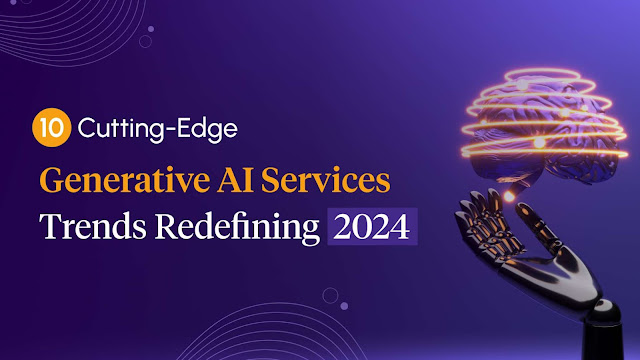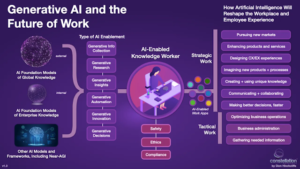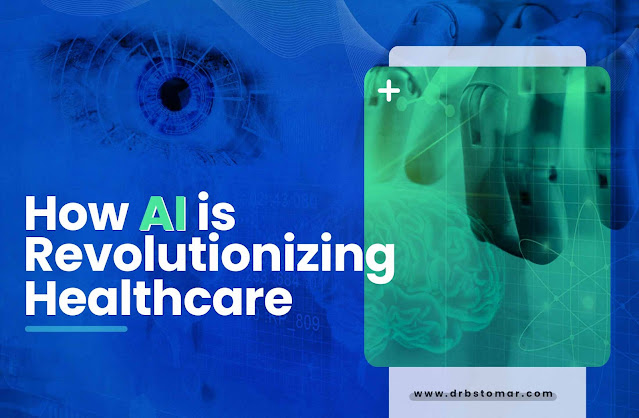Future Trends in Generative AI in 2024
As 2024 unfolds, generative AI stands at the brink of transformative growth, poised to redefine the technological frontier. This burgeoning field is set to revolutionize how we interact with machines, enhancing creativity and expanding the horizons of digital capabilities. With each passing day, generative AI continues to weave its way deeper into the fabric of various industries, promising unmatched innovations.
The upcoming trends in generative AI are not just technical enhancements; they are gateways to new realms of possibility. From improving personalized experiences to reshaping content creation, these advancements offer a glimpse into a future where AI’s impact goes beyond current boundaries. As businesses and creators alike harness these tools, the potential for groundbreaking applications and solutions seems limitless.
For those looking to stay ahead of the curve, understanding these trends is crucial. 2024 will be a pivotal year where embracing generative AI could mean the difference between leading the pack or lagging. As we navigate this evolving landscape, the promise of generative AI not only inspires innovation but also demands a readiness to adapt and thrive in an increasingly AI-integrated world.
Influence of Generative AI on Various Industries
Generative AI is swiftly becoming a transformative force across numerous industries, indicating a new era of innovation and efficiency. In sectors as diverse as entertainment, healthcare, and marketing, this technology is not just a tool but a revolutionary asset that reshapes traditional practices and introduces groundbreaking possibilities. Its influence extends from the creation of new forms of art to the enhancement of customer interactions, proving its versatility and impact.
In the world of art and entertainment, generative AI merges human creativity with algorithmic precision to produce unique artworks and music, captivating a global audience. This fusion not only expands the boundaries of artistic expression but also introduces a new genre of digital artistry that is both innovative and intriguing. It allows creators to explore unimaginable depths of creativity, pushing the envelope of what can be achieved.
Meanwhile, in marketing and healthcare, generative AI’s ability to analyze and synthesize vast amounts of data translates into highly personalized consumer experiences and accelerated medical research. Marketers leverage AI to customize content that resonates deeply with individuals, enhancing engagement and loyalty. In healthcare, AI-driven diagnostics and drug development are speeding up critical processes, potentially saving lives with greater precision and speed. As generative AI continues to evolve, its potential to enhance and revolutionize industry standards is limitless, promising a future where AI integration is synonymous with success and innovation.
Here is the list of some of the top generative AI trends to look after in 2024:
Here is a list of some of the top generative AI trends to watch for in 2024. Stay tuned as we explore the cutting-edge developments that are shaping the future of technology.
1. Capable and powerful small language models
In 2024, small language models (SLMs) are set to revolutionize the AI landscape with their efficient and targeted capabilities. Unlike their larger predecessors, SLMs are trained on high-quality, curated datasets which enable them to operate with greater relevance and less computational overhead. This makes them ideal for applications requiring speed and precision on less robust hardware platforms.
SLMs promise to deliver performance that rivals larger models but with the added advantage of customization for specific tasks and industries. Their smaller size and adaptability make them perfect for businesses looking to integrate AI seamlessly into their operations without the need for extensive infrastructure. This trend towards smaller, more capable models marks a significant shift in how businesses will leverage AI to gain competitive advantages.
2. Autonomous agents are on the rise
The rise of autonomous agents is set to redefine the capabilities of generative AI, pushing the boundaries of what automated systems can achieve. These agents, equipped with advanced algorithms, operate independently to execute tasks, analyze data, and make decisions without ongoing human input. Their ability to learn from interactions and adapt to new challenges makes them an invaluable asset across various sectors.
This development is particularly transformative in customer service, where autonomous agents can deliver personalized experiences at scale. By understanding and reacting to customer needs with minimal delay, these AI-powered agents not only enhance efficiency but also significantly improve user satisfaction. As industries like retail, travel, and education begin to deploy these intelligent systems, the promise of more intuitive and responsive service becomes a compelling reality.
3. Multi-modal AI models
In 2024, multimodal AI models are set to transform how we interact with technology, blending various types of data like text, images, and audio into a single, cohesive AI system. These advancements mean AI can understand and generate content that reflects a richer, more complex understanding of human requests, making interactions more natural and intuitive.
As these technologies evolve, they promise to revolutionize fields ranging from creative arts to customer service, enhancing AI’s ability to generate diverse and dynamic content. This shift not only expands the capabilities of AI but also offers exciting new possibilities for creativity and efficiency in how we use technology every day.
4. High level personalization
High-level personalization is assured to redefine customer engagement in 2024, powered by generative AI’s ability to analyze and adapt to individual preferences. These AI systems leverage complex algorithms and vast datasets to not only understand user choices but also to predict future needs, offering tailored recommendations and content that resonate deeply on a personal level.
This personalized approach allows businesses to deliver precisely what customers desire, enhancing satisfaction and loyalty while significantly boosting revenue. By customizing interactions and experiences, companies can ensure that their offerings meet the unique needs of each customer, creating a seamless and highly engaging customer journey that feels both intuitive and rewarding.
5. Customer services powered by chatbots
Chatbots empowered by generative AI are set to revolutionize customer service by providing tailored, insightful interactions around the clock. These advanced chatbots understand individual customer queries and offer personalized solutions, significantly enhancing the customer experience. The capability to adapt responses and learn from each interaction allows these AI-driven assistants to handle complexities with an almost human-like understanding.
The continuous availability of these AI-powered chatbots means businesses across various sectors can offer exceptional service at any time. Beyond customer queries, these versatile tools also assist in lead generation, sales support, and streamlining internal communications, proving indispensable in the modern digital marketplace. This integration of generative AI into customer service not only boosts efficiency but also drives business growth by ensuring customer satisfaction and loyalty.
6. Intelligent process automation
Intelligent process automation, powered by generative AI, is set to transform business operations in 2024, making them more efficient and effective. This technology streamlines routine tasks such as data entry, invoicing, and documentation, allowing businesses to reallocate their human resources to more complex and strategic roles. The automation of these processes not only saves time but also reduces the likelihood of human error, enhancing overall productivity.
Furthermore, intelligent process automation provides businesses with the ability to rapidly analyze and act on large volumes of data. This capability allows for instant insights into business metrics, enabling companies to make informed decisions swiftly. By integrating advanced AI tools like large language models and image recognition, businesses can tackle challenges like fraud detection and supply chain management more adeptly, paving the way for a smarter, more responsive operational framework in the coming year.
7. Quantum AI
Quantum AI represents a groundbreaking leap in technology, merging the principles of quantum mechanics with advanced artificial intelligence. By utilizing quantum bits or qubits, which can exist in multiple states simultaneously, Quantum AI unlocks new levels of processing efficiency. This capability enables it to handle complex datasets far more swiftly than traditional computing methods, offering a glimpse into a future where decisions and analyses occur almost instantaneously.
As we look ahead to 2024, the potential applications of Quantum AI are vast and varied. From enhancing drug discovery to optimizing logistics, this powerful technology promises to significantly speed up problem-solving across industries, driving innovation at a pace previously unimaginable.
8. Generative AI for scientific research
Generative AI is assured to revolutionize scientific research by dramatically speeding up the exploration and discovery processes across various fields. This innovative technology utilizes vast datasets to train models that can predict, analyze, and generate insights, fostering advancements in disciplines from astronomy to biology. By automating complex data analysis, generative AI allows researchers to achieve breakthroughs faster, enhancing productivity and innovation.
In 2024, expect to see generative AI becoming a crucial tool in scientific endeavors, enabling more precise experiments and quicker validation of hypotheses. Whether it’s uncovering new drug formulas or decoding genetic sequences, generative AI is transforming the landscape of scientific research, making it more efficient and far-reaching than ever before. This shift not only accelerates progress but also opens new avenues for improving human health and understanding our world.
9. Regulation, copyright, and ethical AI concerns
In 2024, as generative AI gains traction, concerns about regulation, copyright, and ethical implications come to the forefront. The potential for data privacy breaches and biased algorithms raises red flags, urging the need for stringent regulations and ethical guidelines. Instances like deepfakes emphasize the urgency for action to safeguard individuals and prevent misuse of AI technologies.
With the European Union leading the way with the Artificial Intelligence Act, other regions must follow suit to ensure consistency and effectiveness in AI governance. Companies must prioritize ethical AI practices, fostering transparency and accountability to navigate the evolving landscape responsibly. As we move forward, addressing these concerns is crucial for fostering trust and promoting ethical AI innovation in 2024.
Conclusion
As 2024 approaches, the trajectory of generative AI continues to point towards a future where its influence spreads through every sector of society. The transformative power of this technology lies not just in enhancing current systems but in redefining the very way we perceive and interact with data-driven processes. From the arts to complex scientific research, generative AI is assured to offer novel solutions and unlock efficiencies that were previously unimaginable, propelling us towards a more innovative tomorrow.
Navigating this evolving landscape requires an acute awareness of both the possibilities and the ethical considerations it brings. As generative AI trends become increasingly integrated into our daily lives, the imperative to govern its application thoughtfully and rigorously grows. In 2024, ensuring that this technology augments our capabilities without compromising our values will be key to harnessing its full potential responsibly and effectively. The journey ahead is as exciting as it is monumental, offering a canvas for creativity and a tool for transformation.
Frequently asked questions on generative AI trends:
1. Generative AI definition?
Generative AI, in simple terms, refers to a type of artificial intelligence (AI) that can create new content, such as images, text, or even music, without direct human input. It’s like having a smart computer program that can come up with its own ideas and creations.
Here’s a closer look at what generative AI does:
a. Creating Something New: Unlike other types of AI that follow specific instructions or rules, generative AI has the ability to generate original content on its own. For example, it can produce realistic images of people or landscapes, write stories or articles, or compose music without copying directly from existing examples.
b. Learning From Data: Generative AI learns from large datasets of examples to understand patterns and styles. It analyzes these examples to figure out how to create similar content. For instance, if it’s trained on a dataset of human faces, it learns the features that make a face look realistic and can then generate new faces that look similar.
c. Adapting and Improving: Over time, generative AI can improve its creations by learning from feedback. If it generates something that doesn’t look quite right or doesn’t sound good, it can adjust its algorithms to produce better results in the future. This process of learning and refining is similar to how humans improve their skills over time.
d. Versatility and Applications: Generative AI has many practical applications across various fields. It can be used in art and design to create visual content, in literature and writing to generate stories or articles, in music to compose melodies, and in many other areas where creativity is needed.
In essence, generative AI is like a creative assistant that can help humans come up with new ideas and content, offering endless possibilities for innovation and creativity.
2. What are some ethical considerations when using generative AI?
Ans: When using generative AI, there are several ethical considerations to keep in mind:
a. Data Privacy: Generative AI often relies on large datasets to learn and generate content. It’s essential to ensure that the data used is obtained ethically and respects individuals’ privacy rights. Unauthorized or unethical data collection can lead to privacy violations and undermine trust in AI systems.
b. Bias and Fairness: Generative AI models can inadvertently perpetuate biases present in the data they are trained on. For example, if the training data is biased towards a particular group, the AI may produce biased outputs. It’s crucial to address bias in training data and ensure that AI systems produce fair and equitable results for all users.
c. Misinformation and Fake Content: Generative AI has the potential to create highly realistic but entirely fake content, such as deepfake videos or misleading articles. This raises concerns about the spread of misinformation and its potential to deceive or manipulate individuals. Ethical considerations include implementing safeguards to detect and mitigate the spread of fake content generated by AI.
d. Intellectual Property Rights: Generative AI can generate content that resembles existing copyrighted material, raising questions about intellectual property rights. It’s important to respect copyright laws and ensure that AI-generated content does not infringe upon the rights of creators.
e. Transparency and Accountability: AI-generated outputs can sometimes be difficult to interpret or trace back to their source. Maintaining transparency about the use of AI and ensuring accountability for its outputs is essential. Users should understand when they are interacting with AI systems and have recourse if they encounter issues or errors.
f. Unintended Consequences: Generative AI systems may have unintended consequences that are difficult to anticipate. For example, the widespread adoption of AI-generated content could impact employment in creative industries or contribute to social polarization. Ethical considerations involve weighing the potential benefits of AI against its potential risks and taking steps to minimize harm.
Overall, ethical considerations in using generative AI require careful attention to data privacy, bias and fairness, misinformation, intellectual property rights, transparency, accountability, and unintended consequences. By addressing these considerations thoughtfully, we can harness the benefits of generative AI while mitigating its risks and ensuring that AI technologies are used responsibly for the benefit of society.
3. What is the role of generative AI in drug discovery?
Ans: Generative AI plays a significant role in drug discovery by helping scientists identify potential new medications faster and more efficiently. Here’s how:
a. Molecule Generation: Generative AI can generate novel molecules with specific properties that may be useful for drug development. By analyzing large databases of chemical structures and learning patterns, AI algorithms can propose new molecules that have the desired characteristics for treating a particular disease.
b. Virtual Screening: AI algorithms can conduct virtual screening of potential drug candidates against targets like proteins or enzymes associated with diseases. This process involves predicting how well a molecule will bind to a target and whether it’s likely to be effective as a drug. Generative AI accelerates this screening process by quickly generating and evaluating large numbers of candidate molecules.
c. Lead Optimization: Once promising drug candidates are identified, generative AI can assist in optimizing their chemical structures for improved potency, selectivity, and safety. AI algorithms can predict how modifications to a molecule’s structure will affect its properties, allowing researchers to fine-tune candidate drugs more efficiently.
d. Drug Repurposing: Generative AI can also help identify existing drugs that may have potential for treating new diseases. By analyzing molecular structures and biological data, AI algorithms can suggest repurposing opportunities, where drugs approved for one condition are tested for efficacy against other diseases.
e. Personalized Medicine: AI-driven approaches in drug discovery can enable personalized medicine by analyzing individual patient data to identify optimal treatment options. Generative AI algorithms can help tailor drug treatments to patients’ genetic profiles, disease characteristics, and other factors, improving therapeutic outcomes and reducing side effects.
Generative AI accelerates the drug discovery process by generating novel molecules, screening potential drug candidates, optimizing lead compounds, identifying drug repurposing opportunities, and enabling personalized medicine. By leveraging AI technologies, researchers can expedite the development of new medications and improve healthcare outcomes for patients worldwide.
4. What is the primary advantage of using generative AI in content creation?
Ans: The primary advantage of using generative AI in content creation is its ability to produce vast amounts of content quickly and efficiently. Here’s how:
a. Speed and Efficiency: Generative AI can generate content at a much faster pace than humans. It can produce articles, stories, and other written material in a fraction of the time it would take a person to do the same task. This rapid content creation allows businesses and individuals to meet tight deadlines and keep up with the demands of today’s fast-paced digital world.
b. Variety and Diversity: Generative AI can create content in a wide range of styles, tones, and formats. Whether it’s blog posts, product descriptions, social media updates, or marketing copy, AI algorithms can generate content that suits different needs and audiences. This diversity ensures that businesses can maintain a consistent online presence while catering to the preferences of their target audience.
c. Scalability: Generative AI is highly scalable, meaning it can handle large volumes of content production without sacrificing quality. Whether a business needs to generate a handful of articles or thousands of product descriptions, AI algorithms can scale up or down to meet the demand. This scalability makes generative AI a valuable tool for businesses of all sizes, from startups to multinational corporations.
d. Consistency and Quality: Generative AI can produce content that is consistent in quality and style. Unlike human writers who may vary in skill and expertise, AI algorithms follow predefined rules and parameters to ensure uniformity across all generated content. This consistency helps maintain brand identity and credibility, particularly for businesses with a strong online presence.
e. Cost-Effectiveness: While hiring human writers can be expensive, using generative AI for content creation can be more cost-effective in the long run. Once the initial investment in AI technology is made, the marginal cost of generating additional content is relatively low. This cost-effectiveness allows businesses to allocate their resources more efficiently and invest in other areas of growth.
The primary advantage of using generative AI in content creation is its ability to produce content quickly, efficiently, and at scale, while maintaining consistency, quality, and cost-effectiveness.





